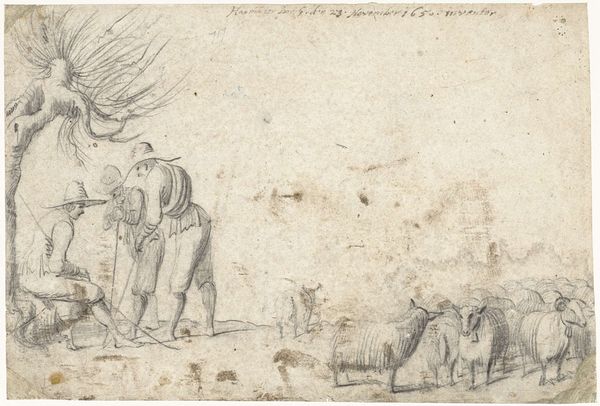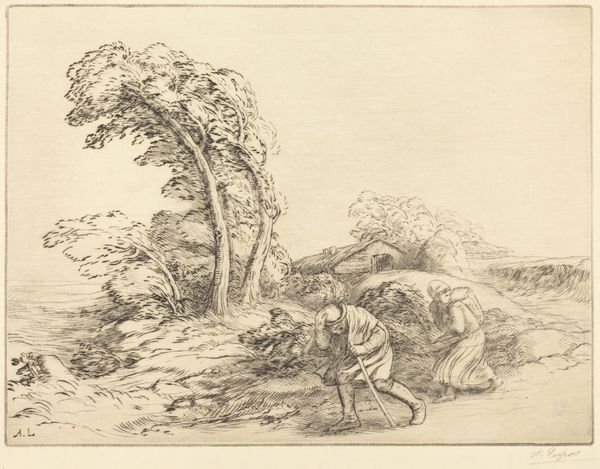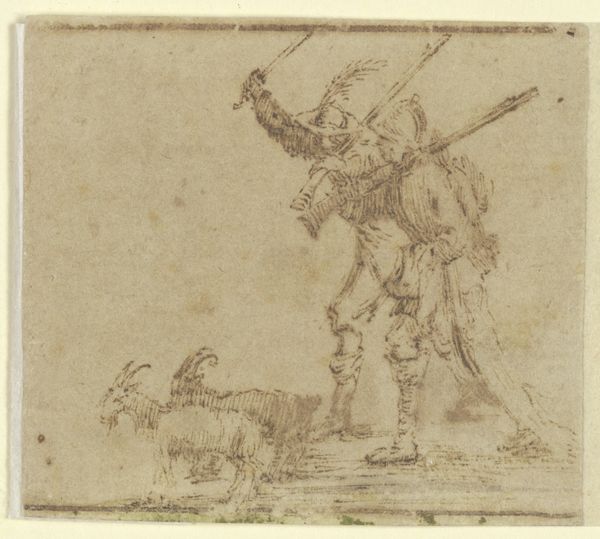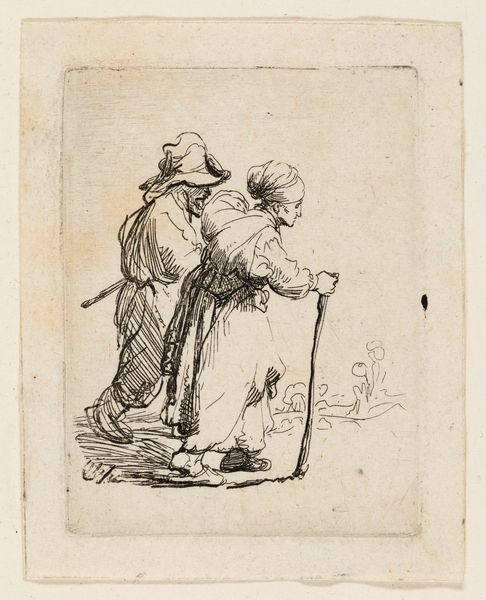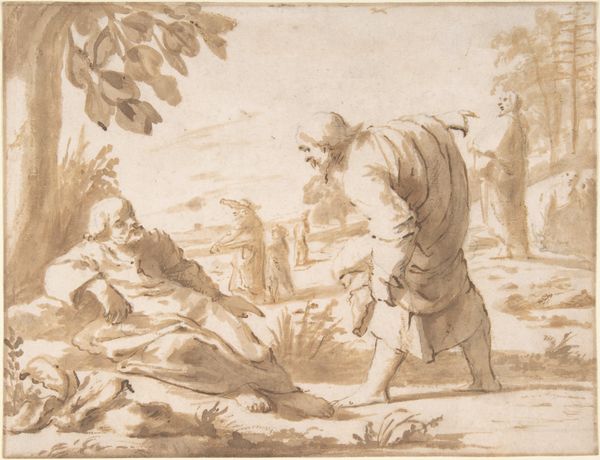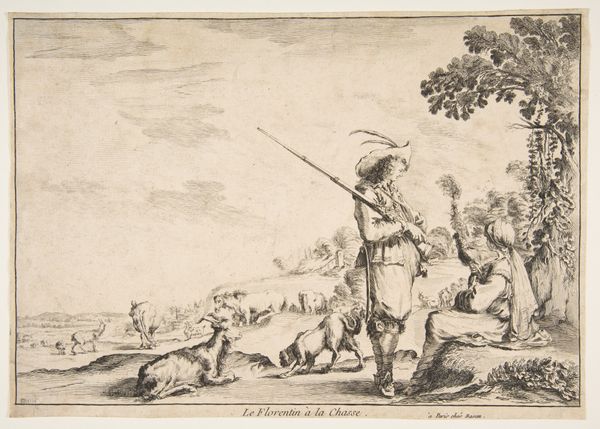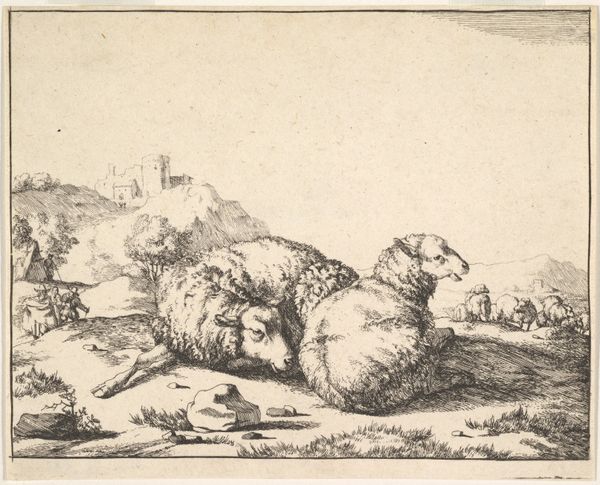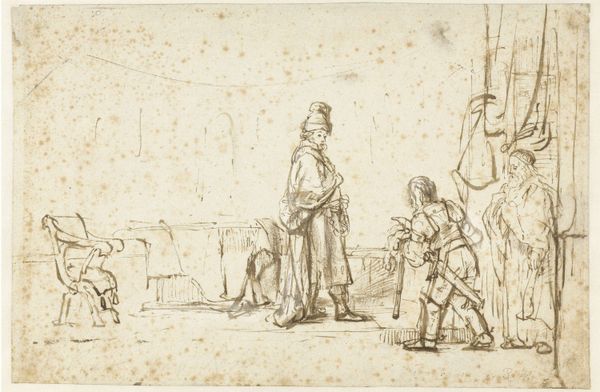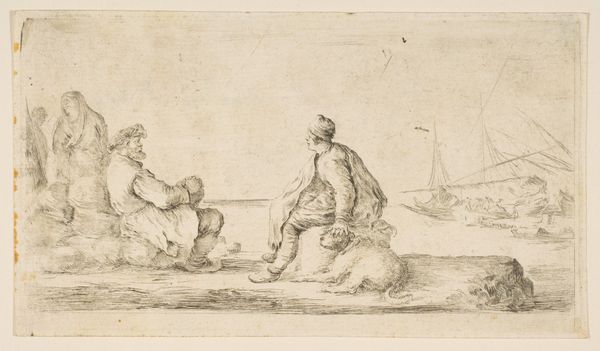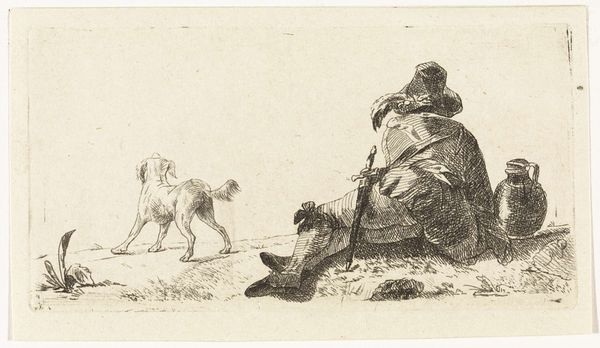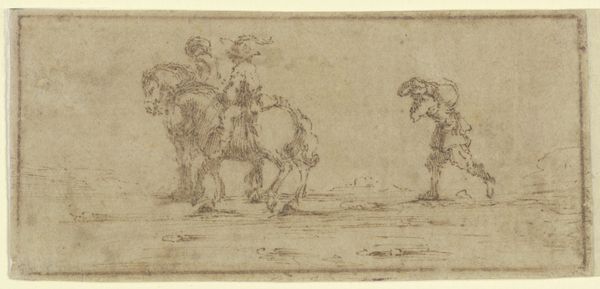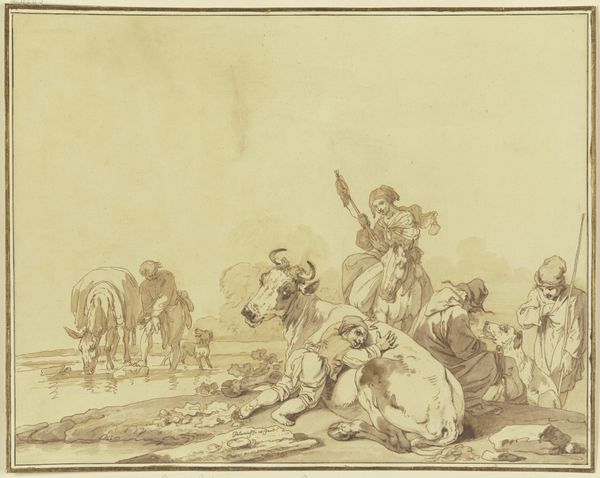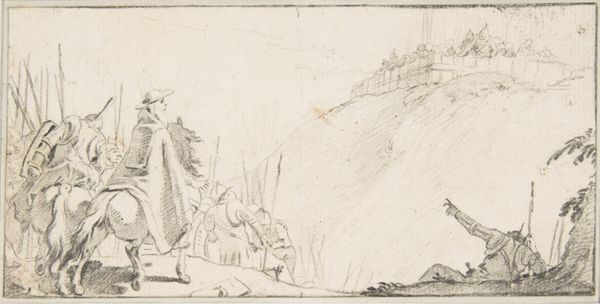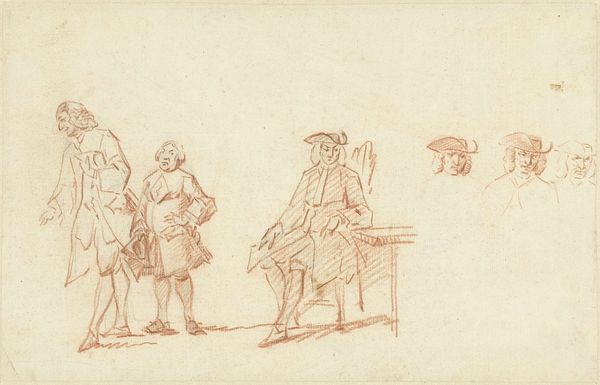
Two sailors with a bale of merchandise 1657 - 1667
0:00
0:00
drawing, print, etching, engraving
#
drawing
#
narrative-art
#
baroque
# print
#
etching
#
landscape
#
figuration
#
men
#
engraving
Dimensions: Sheet: 3 11/16 × 6 1/2 in. (9.3 × 16.5 cm)
Copyright: Public Domain
Curator: Welcome. Here we see “Two Sailors with a Bale of Merchandise,” a drawing by Stefano della Bella created between 1657 and 1667. The scene depicts sailors engaged in commerce at a bustling port. Editor: My first impression is the dynamism achieved through such delicate lines. The figures seem to vibrate with energy, and the composition, though seemingly simple, keeps drawing the eye. Curator: Indeed. The etching process, favored by della Bella, allowed for the dissemination of such scenes to a wider audience, influencing popular perceptions of maritime trade and its participants. Consider the setting. It’s not just a picturesque scene, it shows harbors as vital nodes of economic activity and intercultural exchange. Editor: I’m drawn to the contrast between the solidity of the stone wall and the fluid lines depicting the water and the distant ships. It almost feels like a stage set, with the figures carefully positioned to direct the viewer's gaze. Look at the shading, how the etching renders the weight of the fabrics. Curator: This reflects the political climate, in part. Florence, della Bella's base for much of his life, relied on the Medici’s port at Livorno. Depictions such as these promoted maritime strength in ways akin to propaganda, showcasing prosperous trade and serving elite interests. Editor: So it's a subtle endorsement? The details support your interpretation. The posture of the sailor leaning against the wall speaks volumes about his ease and dominance, contrasting with the arduous labor implied by the covered figure and that enormous bale on the ground. Curator: Precisely! Consider the social dynamics implicit in their gestures, their clothing, and their tasks, mirroring the mercantile structures of the Baroque era. The drawing humanizes these tradesmen within a specific historical context. Editor: Seeing the way della Bella uses line, rhythm, and repetition of form allows one to notice both individual forms and an overwhelming harmony of the full scene. Each line functions separately but it makes the composition more fluid and rich as a whole. I admire its compositional mastery! Curator: Absolutely. By considering the historical context of patronage and public perception of maritime culture in the mid-17th century, one can further see this apparently candid tableau becomes a cultural artefact of its time. Editor: I leave with a greater appreciation of his craft; he translated what you would imagine as robust movement into fine lines so well, giving life and vigor to static copperplate, all while making a historical statement.
Comments
No comments
Be the first to comment and join the conversation on the ultimate creative platform.
